Youth Festival 2024 | Highlights
Youth Festival 2024 | Highlights
{getToc} $title={Table of Contents} $count={false}
This blog is written as a task assigned by the head of the Department of
English (MKBU), Prof. and Dr. Dilip Barad Sir. Here is the link to the
professor's blog for background reading: Click here.
This blog focuses on the highlights of the Youth Festival 2024, which took
place at Maharaja Krishnakumarsinhji Bhavnagar University (MKBU) from 16th
October to 19th October, 2024.
As per the tradition, this time also MKBU celebrated its 32nd Youth Festival
with the title 'Bhav-Spandan Yuvak Mahotsav 2024,' which was hosted by the
Physical Education Department.
This time the university has given five different names to five different
places.
1. એમ્ફી થીયેટર - પંડિત ઉદયશંકર - નૃત્ય મંચ
Amphitheater - Paṇḍita udayaśaṅkara - Nr̥tya man̄ca
2. અટલ ઑડિટોરિયમ - પૃથ્વીરાજ કપૂર - નાટ્ય મંચ
Atal Auditorium - Pr̥thvīrāja kapūra Nāṭya man̄ca
3. નવો કોર્ટ હોલ - અવિનાશ વ્યાસ - સંગીત મંચ
New Court Hall - Avināśa vyāsa - Saṅgīta man̄ca
4. બાહ્ય અભ્યાસક્રમ ભવન - રાજા રવિ વર્મા - કળા મંચ
External Department - Rājā ravi varmā - Kaḷā man̄ca
5. અંગ્રેજી ભવન - દુલા ભાયા કાગ - સાહિત્ય મંચ
Department of English - Dulā bhāyā kāga - Sāhitya man̄ca
The objective was to recognize their contributions and their visit to Bhavnagar. Additionally, posters containing details about each of their lives were presented.
Here is the brochure and timetable:
October 16, 2024
Kala Yatra:
The youth festival started with the Kala Yatra on October 16. We had already started preparing for it on the 12th of October.
The Kala Yatra competition marked the festival’s kick-off, where colleges and departments presented social themes in groups. Our team chose to represent the "Condition of Education" in today’s world, focusing on how students are adversely affected by social media, platforms like TikTok, the influence of reels, and the rising use of drugs among teenagers, which collectively threaten the quality of education. The Kala Yatra procession started from Shamaldas Arts College and concluded at Swaminarayan Gurukul College. Many other colleges highlighted current social issues, such as women’s safety and rape.
Several powerful themes emerged in this year's Kala Yatra. These included the surge in rape cases, Gujarat’s cultural identity, the challenges in the education system, the negative impact of social media, the importance of indoor versus outdoor games, the teachings of the Bhagavad Gita, and the nine emotions, or Nava Rasa, of drama. One central theme addressed the rising incidents of rape, symbolizing women’s suffering through imagery, with performers dressed in black to represent “devils” and accompanied by the haunting song "O re Chiraiya."
For our presentation, we focused on the challenges facing the education system, preparing both handwritten and printed posters to convey our theme. Starting at 4:30 pm from Shamaldas College, we completed the Kala Yatra and reached the Swaminarayan Gurukul College campus at 7:15 pm.
Here is the video of our Kala Yatra presentation. Click Here.
News paper cutouts:
October 17, 2024
Opening Ceremony:
To watch the live stream, click here.
The Opening Ceremony took place at 10:00 a.m. on October 17, beginning with a lamp-lighting ceremony, followed by a prayer and the university song. Various competitions commenced after the formal opening, with Kusum Sarvaiya and Jay Vaghani participating in the prayer group, and a formal welcome extended to the guests.
The ceremony also featured a Stuti performance by the Kalapath Group centered on the theme of Narivandana, celebrating women, with songs like "Rangreza" adding depth to the performance.
Mimicry:
To watch the live stream, click here.
Mimicry is a complex skill that requires participants to use their voices creatively to replicate a variety of sounds, including trains, helicopters, bullets, conch shells, animals, doors, birds, and soda bottles, as well as the sounds of Daklas, bombs, and heartbeats. Participants also mimicked well-known personalities like Farah Khan and Kangana Ranaut, along with cartoon characters such as Oggy and Doraemon. Some added a unique touch to their performances by integrating rhyming elements. Through mimicry, participants displayed impressive abilities to reproduce sounds from vehicles, birds, insects, celebrities, and various elements of their surroundings.
Skit:
To watch the live stream, click here.
The skit covered a wide range of pressing social issues, focusing on challenges faced by women and the need for empowerment. It opened with serious themes, addressing unemployment, flaws in the education system, and controversial topics such as rape cases, emphasizing the struggles that individuals face in daily life. Additional topics included the poor condition of roads in India, corruption in job hiring, and the shift towards paperless transactions. Themes of Gandhian philosophy, particularly the question of non-violence, were also explored.
Through its characters, the skit conveyed the emotional toll of economic hardships and job scarcity, highlighting the struggles people endure due to limited resources. It addressed the complexities surrounding rape cases and the challenges victims face within the legal system and societal attitudes. Furthermore, it touched upon issues faced by marginalized communities and underscored the impact of corruption, favoritism, and bribery in the workforce. Using humor and satire, similar to the Horatian style of the Neo-Classical age, the skit made these serious topics engaging, utilizing varied tones, music, and speech patterns to create a memorable performance.
After a long hiatus, our department participated in the skit competition, with Krupali Belam, Pallavi Parmar, Kusum Sarvaiya, Rutvi Pal, Smruti Vadhera, and Bhumi Mahida as performers, while Jay Solanki provided tabla beats backstage. Under the guidance of Alpa Ponda ma'am, the skit addressed contemporary issues, including the exploitation of corporate employees and corruption within politics and education, blending humor with critical social commentary.
Bhajan:
To watch the live stream, click here.
Comparing Bhajans to English literature offers insights into their themes, style, and cultural nuances. Bhajans often center around themes of solitude, spiritual pursuit, love, and self-discovery. While these themes may also appear in English literature, Bhajans emphasize them in a way that is distinctively embedded in Gujarati culture.
The use of Gujarati words and expressions, such as "મોતીડા પરોવો પાનબાઈ," adds cultural richness and specificity to Bhajans. Similarly, English literature frequently incorporates cultural references that vary according to the author and setting. Structurally, Bhajans can resemble narrative forms like novels or essays, as they often convey personal journeys, reflecting diverse experiences and themes across different Bhajans.
A defining feature of Bhajans is their philosophical tone, frequently embodying the concept of "Vairagya" or detachment. Lines such as
"આવું શાને થાય છે""Āvuṁ śānē thāya chē"
"ઘડવૈયા મારે ઠાકોરજી નથી થાવું""Ghaḍavaiyā mārē ṭhākōrajī nathī thāvuṁ"
"મને જ્યાં ગમે ત્યાં હરું છું ફરું છું""Manē jyāṁ gamē tyāṁ haruṁ chuṁ pharuṁ chuṁ"
"આંબાની ડાળે કોયલ જી રે""Āmbānī ḍāḷē kōyala jī rē"
"ઝેર તો પીધાં જાણી જાણી""Jhēra tō pīdhāṁ jāṇī jāṇī"
"શિલવંત સાધુને""Śilavanta sādhunē"
"ઓધાજી મારા વ્હાલાને""Ōdhājī mārā vhālānē"
"ધૂણી રે ધખાવી રે બેલી""Dhūṇī rē dhakhāvī rē bēlī"
"રામ તો જોગી રે""Rāma tō jōgī rē"
illustrate this philosophical depth, giving Bhajans a unique reflective and spiritual essence.
On-the Spot Painting:
Topics: College Campus, Garden, and Festival
Quiz:
Quiz competition is divided into 2 rounds. In first, there were 25 questions, mostly about current affairs, with a few related to the constitution. Each correct answer earned 2 marks, while a wrong answer cost 1 mark. The top five teams would qualify for the next round. In the second round, each team gets points as per the rules of the subsection of the second round, and the top three teams who get more points will be announced as winners.
Paper Collage:
Topics: Fish Tank, Dancer and Portrait
Essay:
Topics:
● કોણ સરહદો ઈચ્છે છે?
● યશગાથા ગુજરાતની
● નારી અસ્મિતાનું ગૌરવ - જાગવું જરૂરી છે.
● સ્વચ્છતા - ફરજ કે ફરજિયાત?
● જીવનમૂલ્યોની કમી માટે જવાબદાર કોણ?
● કલા - એક રામબાણ ઔષધ
Folk Dance:
To watch the live stream, click here.
One Act Play:
To watch the live stream of day 1, click here.
To watch the live stream of day 2, click here.
The theatre events are a highlight of the Youth Festival, drawing large audiences to witness performances in four main drama categories: One-Act Play, Skit, Mono Acting, and Pantomime. This year’s One-Act Plays addressed various themes, from social issues to mythology. Plays like 'Jamni' and 'Sukh-Dukh na Sathi' explored themes of love and poverty through social inequality, while 'Ek Pavitra Rang' and 'Sikkani Triji Baju' challenged cultural beliefs around menstruation and gender roles, respectively.
'Hirbai nu Mameru' tackled societal pressures on gender, 'Aykha ni Chopat' dealt with betrayal and tragedy, and 'Karna' focused on fate and divine justice with a mythological lens. The inspirational drama 'Abdul Kalam' depicted perseverance, while 'Ale Nahito Bele' brought humor through romantic misunderstandings. By blending themes of realism, tragedy, and inspiration, the plays offered diverse storytelling approaches that resonated with audiences.
Sugam Geet:
To watch the live stream, click here.
- આવું શાને થાય છે
- મહેકતી હવામાં કંઈક તો સમાયું છે
- ગાતા ખોવાયું ગીત શોધો હવે કલરવની ભીડમાં
- આખિર ઇસ દર્દની દવા ક્યાં છે
- દિલ એ નદાન
- કૌન રે છેડે ઓલા, તારે રે દરબાર મેઘરાણા
- ઓ વાલમ તારી આંખોમાં ઉડે રંગ ફુવારા
- કુચી આપો બાજી
- સૂરજના અંધારે ગળેલી રાત
- એક પથ્થરમાંથી બનાતા શિલ્પને અદર મળે, જો માથરું જીંદગીને તો જ નકાર મળે.
Installation:
Topics: Worshipping (Pooja), Happiness - Emotion, and Accident
In the installation competition, Aakash Chavda, Yashraj Sodha, Parthiv Solanki, and I from the English Department chose "Accident" as our theme, focusing on AI and gender bias. Our concept depicted an AI-controlled train faced with the decision of whom to save, symbolizing gender bias by choosing to save a male over a female. However, the execution fell short, as our train model lacked clarity and didn't convey the intended message, leaving viewers confused. In contrast, other teams, especially those focusing on themes like Worship, created more visually effective installations, with the Gujarati Department winning first place for their detailed Ganesh idol.
News paper cutouts:
October 18, 2024
Group Song (Indian):
To watch the live stream, click here.
Classical Singing:
To watch the live stream, click here.
Poster Making:
Nearly all posters reflected themes of ecocriticism, global warming, and tree plantation, emphasizing the need for environmental awareness. Encouraging young minds to grasp the importance of nature and ecology is crucial for building a sustainable, greener future.
Spot Photography:
The primary themes for the photography contest were nature, youth festival activities, and friendship, offering participants the chance to highlight various facets of campus life and the surrounding environment. With a time limit of 2 hours and 30 minutes, all photos had to be taken within the university grounds, adding a creative challenge to capture unique perspectives in well-known spaces. In the end, each participant was required to submit their top three photographs, each representing one of the designated themes.
Western Song (Solo):
To watch the live stream, click here.
શાસ્ત્રીય વાદન (તાલ વાદ્ય):
1. To watch the live stream, click here.
2. To watch the live stream, click here.
Clay Modelling:
Group Song (Western):
To watch the live stream, click here.
શાસ્ત્રીય વાદન (સ્વર વાદ્ય):
To watch the live stream, click here.
Mono-Acting:
To watch the live stream, click here.
The mono-acting performances explored powerful social themes, blending elements of modern tragedy, tragicomedy, and satire. "I am Newspaper" highlighted media’s role in society, inspired by early periodicals and the press as the Fourth Estate. "Mental Disorder" and "Domestic Violence" raised awareness on mental health and gender-based violence, echoing concepts of Aristotle's tragedy and cycles of abuse. The "Rape" piece confronted sexual violence, drawing from the Theatre of Cruelty, while "I am Theatre" celebrated theater’s cultural significance, spanning from Greek to Indian traditions. Other acts like "Shu Aaj Che Bharat" offered satirical commentary on Indian identity, and "I am Flute" symbolized music’s emotional depth through Krishna’s stories. Each theme utilized mono-acting to foster social reflection and engage audiences.
Folk Song:
To watch the live stream, click here.
Elocution:
Topics:
1. મારા સપનાનું ગુજરાત કેવું
2. Exam
3. Suicide
To watch the live stream, click here.
મહેંદી:
સ્વ-રચિત કાવ્ય પઠન:
● વૃદ્ધ માબાપની વેદના
● કાશ એવું બને કે
● હું એવો ગુજરાતી
● દોસ્ત! તું વાત તો કર
● મારું ગામ ખાલી થઈ રહ્યું છે.
● પ્રેમ એટલે કે.....
Classical Dance:
To watch the live stream, click here.
Cartooning:
લોક વાદ્ય વૃંદ:
To watch the live stream, click here.
Mime:
To watch the live stream, click here.
The mime performance explored humanity's complex interactions with nature and society, addressing themes like animal hunting, environmental destruction, and technology misuse. It depicted gender inequality, showing women's resilience and empowerment, and also touched on the impacts of war, the spirit of the Paralympic Games, the story of Charan Kanya, and the lives of soldiers.
Rangoli:
દુહા છંદ:
To watch the live stream, click here.
News paper cutouts:
October 19, 2024
Closing Ceremony:
To watch the live stream, click here.
News paper cutouts and final rankings:
Although our department didn’t secure any positions in this year’s Youth Festival, the experience was invaluable. Twenty-four students from the Department of English enthusiastically participated in eighteen events, putting in tremendous effort and dedication. Through teamwork and self-management, we handled everything from preparations to backstage tasks, fostering a strong sense of unity. Hosting the literature events was particularly memorable, and the university’s support with logistics made the experience even better. As Nelson Mandela once said,
"Do not judge me by my successes, judge me by how many times I fell down and got back up again."
Despite the results, we gained lasting lessons and enjoyed every moment of the festival.

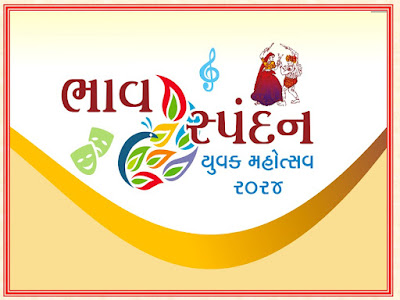





.jpg)
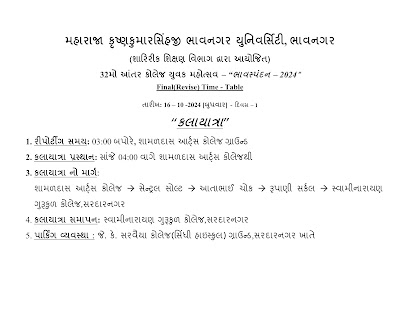
.jpg)
.jpg)
.jpg)




















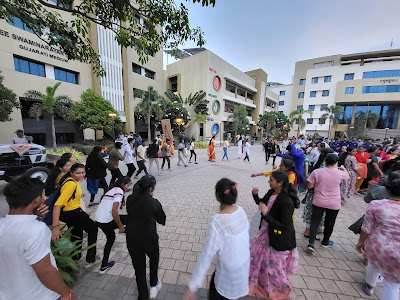



.jpg)


























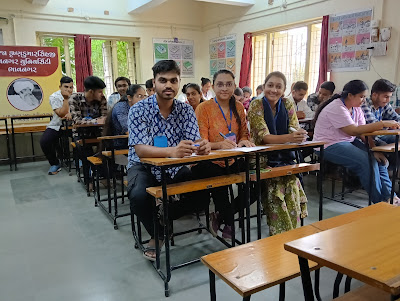




.jpg)
.jpg)





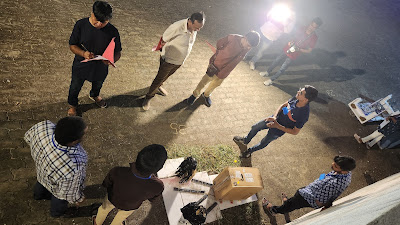
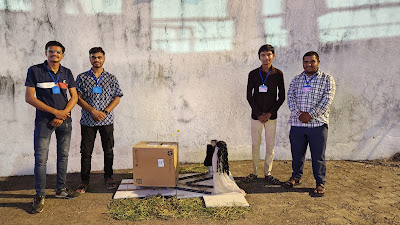























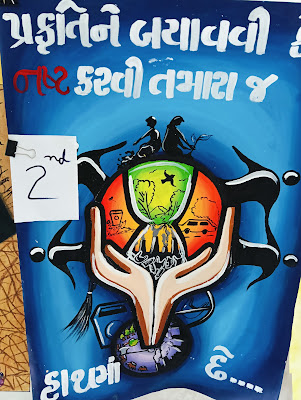











.jpeg)

.jpeg)

.jpeg)






























.jpg)

.jpg)
.jpg)

.jpg)
.jpg)